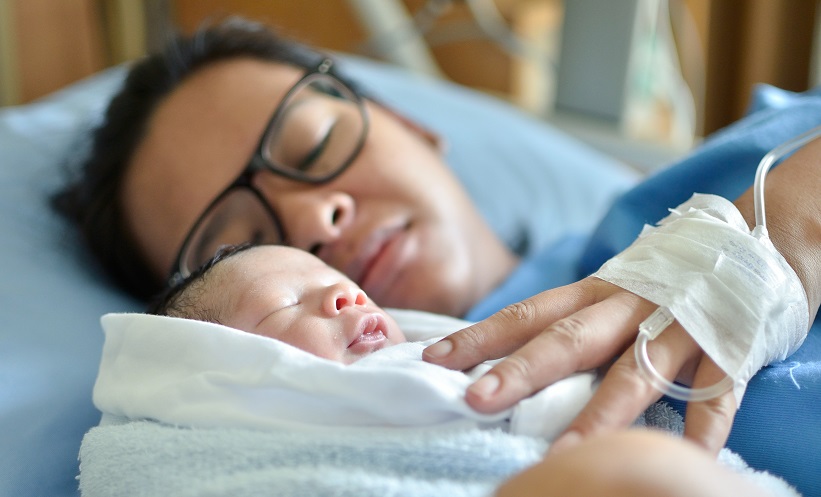Author: Victoria Antoniou, EMJ, London, UK
Citation: EMJ Repro Health. 2024;10[1]:26-29. https://doi.org/10.33590/emjreprohealth/BSDP5879.
![]()
DO THE risks of using dual or double trigger in vitro fertilisation (IVF) outweigh the benefits, or do the benefits outweigh the risks? This was the question posed to the audience by co-chairs Nikolaos Polyzos, Dexeus University Hospital, Barcelona, Spain, and Joop Laven, Erasmus Medical Center, Rotterdam, the Netherlands, at the very beginning of a fascinating debate session at the European Society of Human Reproduction and Embryology (ESHRE) 40th Annual Meeting, which took place from 7th–10th July 2024 in Amsterdam, the Netherlands. Though the audience members were initially hesitant to share their thoughts, this first poll demonstrated a strong preference for dual or double trigger as opposed to against. The ensuing talks aimed to convince the crowd one way or the other, as experts in the field joined Laven and Polyzos to debate.
FOR DUAL TRIGGER
Human chorionic gonadotropin (hCG) induces granulosa cells, cumulus expansion, and resumption of meiosis; this much was common knowledge amongst the group of healthcare professionals listening to Raoul Orvieto, Sheba Medical Center (Tel Hashomer), Tel Aviv, Israel, open his argument. Final follicular maturation is usually triggered by one bolus of hCG (5,000–10,000 units), which is administered as close as possible to the time of ovulation. How does the action of hCG compare to that of the luteinising hormone (LH) on the same receptor, however? This is the first question addressed by Orvieto, who went on to present the results of a study in which intracellular signalling was analysed. The results demonstrated that when LH activated the receptor, the cascade responsible for oocyte maturation was more intensely activated, and when hCG was added, the cascade for steroidogenesis was more intensely activated.1 Further studies have shown a higher oocyte recovery rate when utilising hCG and follicle-stimulating hormone (FSH).2 Addition of FSH, Orvieto explained, is therefore highly beneficial in IVF.
Having then established that hCG and gonadotropin-releasing hormone agonist (GnRH-ag) perform the same function as LH, with and without the risk of ovarian hyperstimulation syndrome (OHSS), respectively, Orvieto went on to question whether or not they do the same with regards to the number of oocytes. Comparing the results of multiple studies, Orvieto showed the audience that both methods provided an advantage in oocyte production, with some showing an advantage for the GnRH-ag. If using both hCG and GnRH-ag improves oocyte numbers, he asked the crowd, “why not combine them for a better overall result?”
To emphasise his point, Orvieto discussed the results of a retrospective study in which dual trigger was tested. The patients receiving dual trigger not only had a higher number of oocytes retrieved, but had a higher live birth rate (41.36% of patients versus 30.49% in the control group receiving hCG only).3 A further study showed that patients in the dual trigger group more often had patients with at least one top-quality embryo, compared to the group receiving hCG only.4 Several research groups have shown the benefits of dual trigger compared to hCG alone, including, perhaps most importantly, higher pregnancy rate and live birth rate. Orvieto presented a flurry of results from studies throughout the past decade that demonstrated the seemingly clear advantages of using dual trigger, including a case study in which a patient went through seven unsuccessful rounds of IVF before receiving a double trigger on the eighth round, which resulted in conception.
“By double triggering, we combine the advantages of both prolongation of the time between ovulation triggering and oocyte pickup (OPU), and also the consequent simultaneous induction of an FSH surge,” Orvieto commented.
AGAINST DUAL TRIGGER
Key opinion leader Anja Pinborg, Copenhagen University Hospital, Denmark, was next to take centre stage as she presented her case against the use of dual or double trigger in IVF. She began her argument with a comparison between natural ovulation and the use of dual trigger, detailing how the concurrent administration of GnRH-ag and hCG in dual trigger leads to a surge of LH and FSH, combining the advantages of both components and mimicking the events that occur in the natural cycle. To assess whether or not dual trigger provides a significant advantage, Pinborg discussed the results of a meta-analysis of several randomised control studies between 2008–2022, comparing dual and hCG triggers.5
When looking at these trials, Pinborg highlighted that though there is indeed a difference of 0.82 in the number of mature oocytes collected, all bar one study performed in China included fewer than 100 patients. Additionally, when looking at the clinical pregnancy rate, it is true that there was a statistically significant difference between the two types of triggers, and the same could be said for live birth rate per cycle; however, very few studies actually included analysis of live birth. She added that the studies also appear to show that dual trigger is beneficial in fresh embryo transfer (ET), but there is no statistically significant difference in frozen ET. Additional research has also shown there is no difference between dual trigger and hCG trigger results in women with higher BMIs.6
Pinborg went on to describe the results of a retrospective study that involved giving the hCG trigger for a period of time, followed by giving the dual trigger.7 This research found that patients receiving the dual trigger had a higher number of mature oocytes compared to those receiving the hCG trigger (mean 6.4 versus 6.0), and a higher number of fertilised oocytes (mean 4.7 versus 4.3).7 However, when analysing the pregnancy rate and live birth rate in this cohort, researchers found that both groups yielded the same results.7
Pinborg emphasised the fact that this is real world data, carried out on a large group of patients (8,500 cycles), and stated that: “The dual trigger is not for all.” She added: “It increases the complexity of a protocol, it increases the cost, and it increases patient discomfort,” highlighting that dual trigger involves multiple injections, which may lead to a higher drop-out rate. Additionally, she emphasised that not all patients may benefit equally and noted that the evidence is still limited, and more research is needed to establish protocols. Pinborg then went on to deliver what she believed to be the most important argument against the use of dual trigger; this method increases the risk of OHSS in patients, even with a low dose of hCG. This is particularly true in patients who are already predisposed to developing OHSS.
This is not to say that the dual trigger should never be used, Pinborg stated. It is a valid option for IVF after a suboptimal response to the agonist trigger, as well as for patients with hypogonadotropic hypogonadism, patients of advanced age who have been through a previous IVF cycle, or those who have low LH after agonist trigger. Pinborg’s conclusion, therefore, was not necessarily ‘con’, but instead errs on the side of caution, suggesting that dual trigger has its place in IVF, but clinicians should not be over-treating patients, and should use this method sparingly.
REBUTTAL: PRO
Pinborg’s arguments were hard to refute, and Orvieto’s rebuttal reflected this. He agreed that dual trigger should not be offered to patients at high risk of OHSS, and that further randomised control trials are needed to establish protocols. The cost, however, of dual trigger should not be considered a reason to not use it, he argued. If increasing the cost by 10 Euros improves the chances of a live birth rate, Orvieto explained, it is worth it.
Everything is ultimately about statistics, he continued. His own research groups have produced several articles, including a randomised control trial, in recent years exploring the benefits of dual trigger compared to hCG trigger. These have not been taken into account by the ESHRE guidelines, which Pinborg had previously highlighted did not recommend using dual trigger. Increasing numbers of randomised trials are additionally showing the benefit of double trigger, he argued, including in predicted normal responders. He presented several studies which supported this argument, responding to Pinborg’s own point about the lack of data to support the benefits of dual trigger on live birth rate; the trials showed by Orvieto showed a clear benefit for most patients.
REBUTTAL: AGAINST
In response, Pinborg urged the audience to consider the history of reproductive medicine. It was once suggested that clinicians practice endometrial scratching, assisted hatching, continuation of the long protocol, and many other ideas which were proven to not be the best approach for all patients after several randomised controlled trials. She implored the crowd to use dual trigger only when other options have been considered, and to not add unnecessary injections for female patients.
THE FINAL VOTE
The second round of voting showed that though some audience members were swayed by the arguments they had heard, the majority of the crowd continued to favour the use of dual or double trigger for IVF.
Regardless of the votes received at ESHRE, it is clear that the topic remains controversial, and that more trials are needed to truly determine the safety of dual trigger compared to hCG trigger, and how this compares to the benefits for patients.







